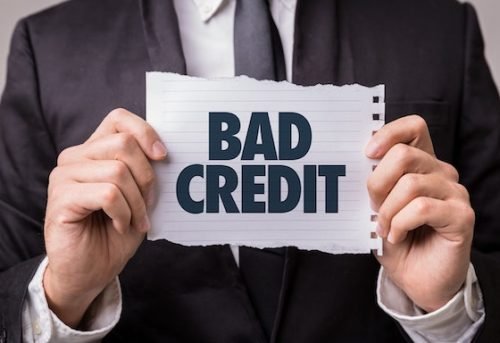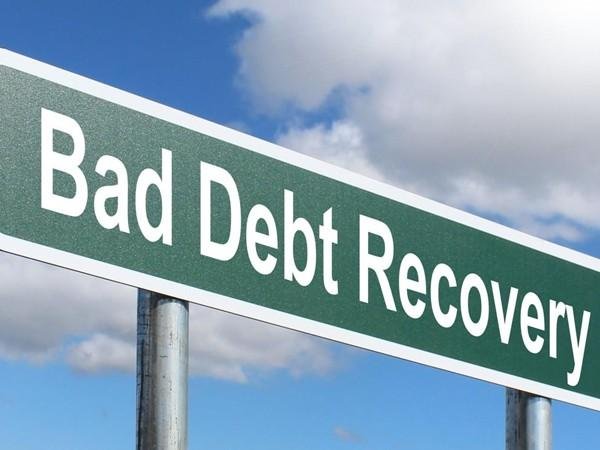Extending credit to clients is a typical practice in all businesses that helps improve sales and strengthens long-lasting connections. However, even after multiple reminders, clients may fail to pay the amount owed. Such unpaid payments are referred to as bad debts. When these bad debts are written off, the business incurs a loss. However, in some cases, a portion or all of these bad debts are later collected from the debtor; this is referred to as bad debt recovery.
Bad Debt Recovery is an important aspect of accounting and financial management since it immediately affects a company’s profitability and cash flow. This article discusses the definition of bad debt recovery, the accounting procedure, journal entries, tax treatment, and the general significance of bad debt recovery in business.
Understanding Bad Debt

Bad debt is defined as amounts owing to a creditor that are unlikely to be collected. Typically, it stems from a debtor’s incapacity or reluctance to pay. In accounting, bad debts are often written off when recovery is deemed unlikely after all reasonable collection efforts have failed.
Common Causes of Bad Debt
- Improper credit evaluation: Extending credit without considering the borrower’s repayment capacity.
- Economic downturns and market volatility can impact borrowers’ financial situation.
- Ineffective credit management: Insufficient monitoring of accounts receivable leads to late payments.
- Fraud or insolvency: Certain debtors purposefully default or become insolvent.
- Disputes and misunderstandings can lead to non-payment.
Understanding these factors is critical before deciding on the best recovery technique, as prevention is frequently more cost-effective than post-default action.
Legal Approaches to Bad Debt Recovery
Legal techniques of debt recovery entail pursuing a creditor’s entitlement through the judicial system or statutory authorities. These methods are frequently used when informal collection efforts fail or the debtor is recalcitrant.

Demand Letter or Legal Notice
Often, the first step in the legal recovery procedure is to issue a demand letter or legal notice. This document, usually written by a lawyer, formally notifies the debtor of the overdue balance, the grounds for the claim, and the implications of failure to pay within a set time frame.
- Demonstrates serious intent.
- Provides evidence of due diligence prior to litigation.
- May lead to a settlement without court intervention.
In many jurisdictions, serving a legal notice is a legislative requirement before initiating a lawsuit.
Court Action or Civil Suit
If the debtor does not answer or settle, the creditor may bring a civil lawsuit for collection. The process normally includes:
- Filing a claim with the proper court.
- Served the debtor with summons.
- Provide evidence of debt (contracts, invoices, emails, etc.).
- Obtaining a judgment for payment.
Once a judgment is secured, it becomes legally enforceable through methods such as property attachment or wage garnishment.
However, litigation can be time consuming and expensive. As a result, it is frequently utilized as a last resort if other methods of dispute resolution (ADR) or discussion have failed.
Enforcement of Judgment
Winning a judgment is simply one aspect of the rehabilitation process. Enforcement guarantees that the creditor obtains the amount owed. Common enforcement alternatives include:
- The writ of execution allows for the seizure and sale of debtor’s assets.
- Garnishee orders authorize deducting monies from the debtor’s bank account or wages.
- Charging orders impose a legal charge on the debtor’s property.
- Bankruptcy or insolvency proceedings are initiated when a debtor is unable to pay their debts and must liquidate assets.
If immediate payment is impractical, courts may require payment plans or installment schedules.
Alternative Dispute Resolution (ADR)
ADR approaches, such as mediation, arbitration, or conciliation, are increasingly being utilized to resolve financial problems without incurring the cost and delay of litigation.
- Mediation involves a neutral third party aiding settlement negotiations.
- Arbitration provides a binding ruling by an arbiter, which is frequently faster and confidential.
- Conciliation helps parties reach a mutually agreeable conclusion without official proceedings.
Insolvency and Bankruptcy Proceedings
When a debtor fails to meet financial obligations, insolvency rules allow creditors to collect some or all of their debts.
- In corporate insolvency, creditors might petition for winding up or appoint an administrator to manage assets and liabilities.
- Personal bankruptcy allows debtors to liquidate assets and distribute them to creditors.
While insolvency recoveries may be partial, they ensure equitable treatment of all creditors and avoid preferential payments.
Use of Debt Collection Agencies
In many jurisdictions, specialized debt collection organizations use legal frameworks to collect debts on behalf of creditors. These agencies employ structured recovery techniques like as negotiation, debtor tracking, and payment plan management. However, they must follow consumer protection and fair collection regulations, such as those prohibiting harassment, misleading representation, or invasion of privacy.
Statutory Time Limits
Debt collection actions are subject to limitation periods, after which legal claims are unenforceable. The limitation period typically spans between 3 and 6 years from the date of default, depending on the jurisdiction. Creditors must move quickly to avoid being banned by statute.
Practical Approaches to Bad Debt Recovery
While legal remedies are necessary, practical and proactive actions frequently determine the outcome of rehabilitation attempts. Efficient debt management involves risk assessment, negotiation, and customer relationship management.
Preventive Measures: Credit Control and Risk Assessment
Effective debt recovery begins well before default. Businesses should use preventive practices, including:
- Assess creditworthiness by doing background checks before issuing credit.
- Clarify credit practices, including payment terms, deadlines, and penalties for late payments.
- Monitor overdue accounts regularly using aging reports.
- Ensure clear communication of payment methods with clients.
Early Intervention
The earlier a delinquency is discovered, the better the chances of rehabilitation. Implementing early warning systems such as reminders, follow-up calls, or emails can assist avoid minor delays from becoming into bad debts.
- Provide friendly reminders before the due date.
- Conduct follow-ups promptly after default.
- Escalation to management or collection specialist.
Prompt contact frequently resolves payment concerns before legal action is required.
Negotiation is a cost-effective and relationship-building tactic. The goal is to reach a mutually advantageous agreement that ensures partial or complete restitution without litigation. Strategies include:
- Offering incentives for immediate payments.
- Creating installment plans.
- Accepting partial payment in exchange for complete discharge (compromise settlement).
- Converting debt to equity (in corporate contexts).
A professional, empathic tone during negotiations promotes cooperation and maintains goodwill.
Debt Restructuring
In times of financial crisis, creditors may agree to restructure the debt. This can include: • Longer payback durations.
- Reduced interest rates.
- Payments are temporarily suspended.
- Refinancing with new credit arrangements.
Debt restructuring not only helps with recovery, but it can also assist debtors regain stability and ensure long-term repayment capabilities.
Use of Technology in Debt Recovery
Modern technology plays an important role in boosting efficiency and transparency in debt recovery.
- Automated reminders and billing systems help eliminate administrative delays.
- Data analytics can predict default risks and prioritize recovery operations.
- CRM technologies track interactions with debtors.
- Digital payment platforms enable speedy settlements.
- AI may discover behavioral patterns and provide optimal recuperation measures.
Small and medium-sized firms (SMEs) frequently lack the necessary knowledge and resources for in-house recovery. Outsourcing to professional collection organizations offers expert handling while allowing businesses to concentrate on their main operations. When outsourcing, it is important to:
- Verify the agency’s license and reputation.
- Establish explicit reporting and compliance standards.
- Maintain data protection and fair collecting processes.
Maintaining Customer Relationships
Debt recovery should not irreparably harm commercial relationships. Many debtors default for reasons other than malice. A professional, empathic approach frequently leads to recovery and sustained collaboration. Creditors should teach their employees in ethical collection procedures and emotional intelligence so that they can manage delicate conversations effectively.
Accounting and Tax Treatment of Bad Debts
When a debt is considered to be unrecoverable, it should be wiped off on the books. In most tax systems, a bad debt deduction can be claimed if:
- The debt was previously reported as income.
- Reasonable recovery efforts were conducted.
- The debt is determined to be uncollectible.
Challenges in Bad Debt Recovery
Debt collection can be challenging due to legal delays and procedural restrictions.
- Debtors who are insolvent or absconding.
- High enforcement costs compared to the debt amount.
- Complicated cross-border transactions.
- Harsh collection tactics can pose ethical and reputational issues.
Balancing perseverance and fairness remains the hallmark of successful recovery.
Best Practices for Effective Debt Recovery
To optimize success, companies should implement the following best practices:
- Create a structured credit policy.
- Prioritize debt recovery efforts by dividing debtors into risk categories.
- Teach personnel about negotiating and compliance.
- Utilize several contact channels, including letters, calls, emails, and internet portals.
- Keep complete records for legal and tax purposes.
- Consider alternative dispute resolution (ADR) before pursuing legal action.
- Regularly review and adjust policies to align with performance indicators.
A well-coordinated plan that combines legal knowledge, financial discipline, and interpersonal skills produces the best results.
Ethical and Regulatory Considerations
Debt collection must be conducted within ethical and legal constraints. The Fair Debt Collection Practices Act (FDCPA) in the United States, as well as comparable rules overseas, prohibits:
- Harassment and threats.
- Provide debtor information to third parties.
- Misrepresenting legal authority.
- Unreasonable collection hours and frequency.
Compliance protects both the creditor’s reputation and the debtor’s rights. Ethical recovery promotes long-term reputation and consumer trust.
Conclusion
Bad debt recovery is a complicated but necessary step in financial management. While legal remedies provide organized enforcement, practical techniques like as negotiation, credit control, and technology-driven collection frequently produce faster and less expensive results.
An integrated approach that incorporates preventive measures, ethical collecting procedures, and legal action where needed promotes maximum recovery while retaining professional integrity. In today’s dynamic economic environment, effective bad debt recovery requires more than just force; it also requires strategy, empathy, and vision.
Finally, controlling bad debt is about more than just recovering money; it’s also about ensuring financial stability, maintaining connections, and supporting corporate growth.
